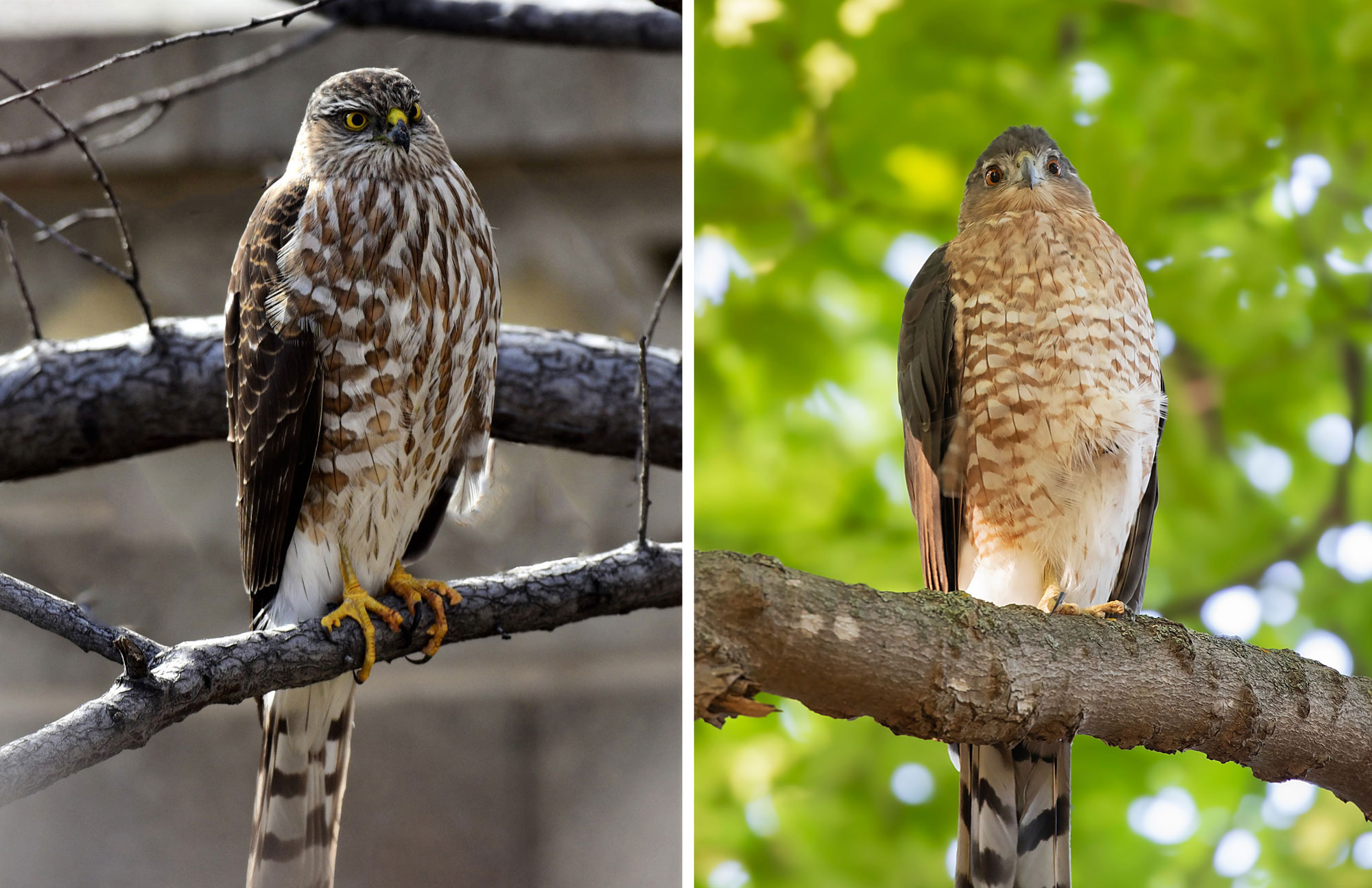What's the difference?: Sharp-shinned hawk vs. cooper's hawk

Plenty of similarities exist between birds in the avian world. It can be hard to tell a downy woodpecker from a hairy woodpecker. Or a house finch from a purple finch. Ospreys and bald eagles can also be confused with each other, especially in flight.
But even among expert birders, the sharp-shinned hawk and the Cooper's hawk can be difficult to distinguish from one another. Adding to the confusion: In addition to being similar in appearance, these two hawks also have similar behaviors, according to the National Audubon Society.
Both birds are a steely gray or bluish gray, with barred white and reddish-orange plumage underneath. Color alone makes these birds nearly impossible to tell apart.
Because of the uncanny similarities between the two hawks, birding experts typically advise that there is no single characteristic that can easily be used to distinguish between them. Instead, consider several features, including size, head shape, neck feathers and tail feathers.
One of the first things to consider when trying to tell whether a particular bird is a Cooper's hawk or a sharp-shinned hawk is the size. Cooper's hawks are about 6 inches bigger than sharp-shinned hawks, the Audubon Society reports. A good rule of thumb is that Cooper's hawks are similar in size to a crow, while sharp-shinned hawks are closer in size to a blue jay.
The reason size alone isn't a good indication of whether you're seeing a Cooper's hawk or sharp-shinned hawk is because of the size variation among males and females. The females of both species are about one-third larger than the males, so a female sharp-shinned hawk can be similar in size to a male Cooper's hawk, according to the Audubon Society.
Head size can also be a telling feature of these birds. The Cooper's hawk has a more prominent head that is block-like and dome-shaped, while a sharp-shinned hawk has a smaller, more rounded head.
Neck feathers are another key ID feature, although it is not always easy to get a look at the nape of a bird's neck while out in the field. If you can, though, check the coloring. A sharp-shinned hawk will have the same dark grayish-blue feathers on both its head and neck, while a Cooper's hawk's neck feathers are lighter in color than its head feathers, The Spruce reports.
If you see the hawk while perched or at rest, check out the tail feathers for another way to help tell these two look-alikes apart. The tail of a Cooper's hawk is typically rounded, while a sharp-shinned hawk has tail feathers with a straight or flat edge, according to the Audubon Society.
Here in Will County and elsewhere in northern Illinois, the timing of your hawk sighting can also be telling. That's because Cooper's hawks are year-round residents in this area, while sharp-shinned hawks travel to their breeding grounds in Canada for the summer before traveling south in the fall, according to the Cornell Lab of Ornithology.
When considering whether the bird you are seeing is a sharp-shinned or Cooper's hawk, it's best to consider as many factors as possible because one alone is not often enough for a definitive identification. But with a good look and a little know-how about some of their subtle differences, you'll be on your way to making the correct ID.
